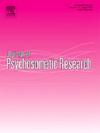Independent association of depressed mood and high suicide risk as assessed by the patient safety screener-3 (PSS-3) with prolonged hospitalization: A single-center cross-sectional study
IF 3.3
2区 医学
Q2 PSYCHIATRY
引用次数: 0
Abstract
Purpose
We developed a Japanese version of the Patient Safety Screener-3 (PSS-3) and applied it to stratify suicide risk in hospitalized patients. Additionally, we tested the hypothesis that PSS-3-assessed depressed mood and suicide risk are independently associated with length of stay (LOS) among hospitalized patients.
Methods
A cross-sectional study was conducted at a university hospital in Tokyo from January to December 2023. The Japanese version of the PSS-3 was used to screen hospitalized patients with advanced cancer. Data were collected from medical charts and Diagnosis Procedure Combination records. Linear mixed-effects models with patient-level random intercepts were used to examine associations among depressed mood, suicide risk, and LOS, adjusting for age, sex, cancer diagnosis, Charlson Comorbidity Index, activities of daily living (ADL), and disturbance of consciousness.
Results
Among 2077 screenings, 2019 first assessments on admission were analyzed, of which 90.8 % were performed on admission day. Depressed mood was present in 308 patients (15.3 %), and 26 patients (1.3 %) were assessed as having high suicide risk. Depressed mood prolonged LOS (reference geometric mean: 8.44 days) by 18 % (1.18; 95 % CI, 1.07–1.30), while high suicide risk prolonged it by 40 % (1.40; 95 % CI, 1.03–1.90), in a clinically and statistically balanced model adjusted for age, sex, and cancer diagnosis.
Conclusions
The PSS-3 stratified hospitalized patients by depressed mood and suicide risk, both of which were independently associated with prolonged hospitalization. This simple screening tool may facilitate early identification of high-risk patients, optimize resource allocation, and improve patient care.

通过患者安全筛查-3 (PSS-3)评估的抑郁情绪和高自杀风险与长期住院的独立关联:一项单中心横断面研究
目的研制日本版患者安全量表(Patient Safety Screener-3, PSS-3),并应用该量表对住院患者的自杀风险进行分层。此外,我们检验了pss -3评估的抑郁情绪和自杀风险与住院时间(LOS)独立相关的假设。方法于2023年1 - 12月在东京某大学医院进行横断面研究。日本版的PSS-3被用于筛查晚期癌症住院患者。数据来源于病历和诊断程序组合记录。采用患者水平随机截取的线性混合效应模型,对年龄、性别、癌症诊断、Charlson共病指数、日常生活活动(ADL)和意识障碍进行校正,检验抑郁情绪、自杀风险和LOS之间的关系。结果在2077次筛查中,分析了2019次入院首次评估,其中90.8%在入院当天进行。308名患者(15.3%)存在抑郁情绪,26名患者(1.3%)被评估为有高自杀风险。经年龄、性别和癌症诊断调整后的临床和统计平衡模型显示,抑郁情绪延长了LOS(参考几何平均:8.44天)18% (1.18;95% CI, 1.97 - 1.30),而高自杀风险延长了LOS (1.40; 95% CI, 1.03-1.90) 40% (1.40;结论PSS-3对住院患者抑郁情绪和自杀风险进行分层,两者均与延长住院时间独立相关。这种简单的筛查工具有助于早期识别高危患者,优化资源配置,改善患者护理。
本文章由计算机程序翻译,如有差异,请以英文原文为准。
求助全文
约1分钟内获得全文
求助全文
来源期刊
CiteScore
7.40
自引率
6.40%
发文量
314
审稿时长
6.2 weeks
期刊介绍:
The Journal of Psychosomatic Research is a multidisciplinary research journal covering all aspects of the relationships between psychology and medicine. The scope is broad and ranges from basic human biological and psychological research to evaluations of treatment and services. Papers will normally be concerned with illness or patients rather than studies of healthy populations. Studies concerning special populations, such as the elderly and children and adolescents, are welcome. In addition to peer-reviewed original papers, the journal publishes editorials, reviews, and other papers related to the journal''s aims.

 求助内容:
求助内容: 应助结果提醒方式:
应助结果提醒方式:


